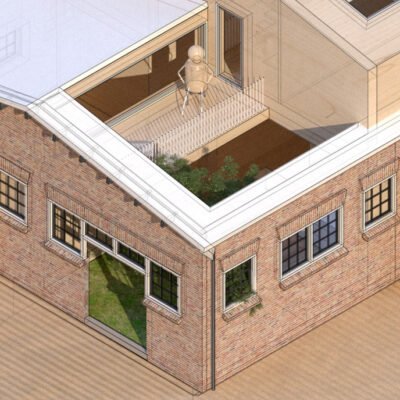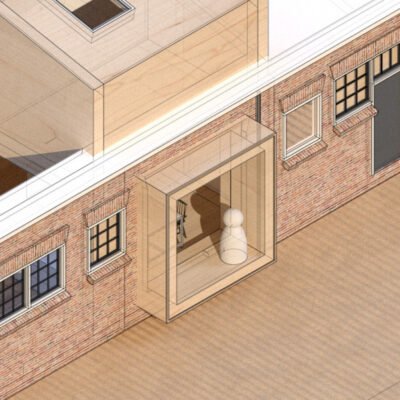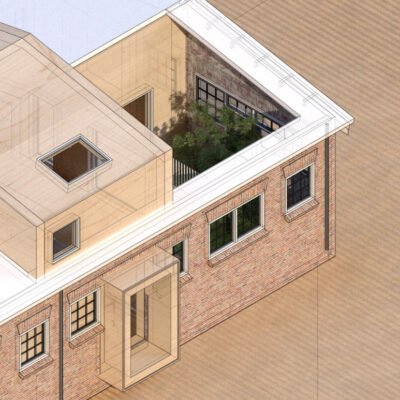HEMBRUG A12
Medium
Listed as a monument, Building A12 was once used as a sanitary facility for military personnel of the nearby shooting range. Sinds 2003 the building was decommissioned and in need of a new purpose until two families proposed to transform the building into their homes. A12 is located within the Hembrugterrein. The Hembrugterrein has a rich history, serving as the site where the Artillerie Inrichtingen produced firearms, artillery, and ammunition for the Dutch army from 1895 onwards. After the outbreak of World War I, it became a bustling workplace for 8,500 people, only to face near destruction during World War II. In the years that followed, nature reclaimed the abandoned area, and the buildings fell into disrepair. Except for a few creative entrepreneurs who found temporary refuge there, the site remained closed off from the outside world for many years.

Transforming a 100-year-old bathhouse, originally designed with only toilets and showers, into a modern residential building posed two key challenges: light and views. The existing windows were too small for the building’s large floor area, creating a dark interior. Moreover, their high placement restricted direct views, requiring residents to look up at an angle and disconnecting them from the beautiful surroundings.

The design focuses on strategically adding and removing volume to optimize interior spaces. By introducing patios at both corners of the building, morning and evening sunlight floods deep into the homes, with prime living spaces wrapping around these patio gardens, seamlessly blurring the line between indoor and outdoor living. These interior gardens not only reduce the overall depth of the homes but also create an additional facade layer, allowing for larger windows and doors without compromising the building's historic character.

The design is conceived as a volumetric checkerboard, with sections pushed down by patios and others elevated to form bedrooms on the private second floor. The pitched roof of the upper floor is a clear homage to the original roofline, skillfully balancing modern functionality with respect for the building's heritage.

The transformation of Building A12 draws inspiration from its natural surroundings. The new facades will be overgrown with a carefully selected mix of green and flowering climbing plants. The roof of the existing structure is covered with a biodiverse layer of grasses, herbs, and wildflowers. This green identity seamlessly connects the adjacent Hembrug forest to the dotted internal gardens and the plant-covered facades and roof.













